2024 Shukujiri Site
Hitachiōmiya City, Ibaraki Prefecture
Middle Yayoi Period (ca. 2,300 years ago)
A secondary burial from the Yayoi period with pottery arranged in a circular formation
The Shukujiri Site is a secondary burial site from the Middle Yayoi period. It is located on a middle terrace on the left bank of the Naka River, near its confluence with the Ōsawa River, which flows through the Torinoko mountain range. Secondary burials from the Yayoi period are characterized by the placement of bones inside jar-shaped pottery, often accompanied by human-faced pottery. Human-faced pottery is a type of vessel with a three-dimensional facial depiction on the neck, representing the head, while the body of the jar is conceptualized as the torso. These vessels are primarily distributed in eastern Japan.
In Hitachiōmiya City, other secondary burial sites include the Izumisakashita Site and Nakadai Site in the Kuji River basin and the Onotenjinmae Site in the Naka River basin. The Shukujiri Site is the fourth such burial site discovered in the city.
In 2019 (Reiwa 1), a trial excavation revealed a pit containing Middle Yayoi pottery. Based on the high likelihood of it being a secondary burial, a full-scale excavation was conducted, uncovering 15 jar-shaped pottery vessels arranged in a horseshoe-shaped configuration. Including three dislocated vessels found nearby, it is estimated that originally 18 vessels were arranged in a circular formation.
From the central area of the circle, fragmented tubular beads, small jade beads, and irregularly shaped beads were unearthed. The fragments of tubular beads were scattered throughout the fill, suggesting that they had been intentionally broken and scattered during the process of filling the pit. Additionally, a shark tooth was discovered inside one of the pottery vessels.
This site provides significant insights into the mortuary practices and ritual activities of the Middle Yayoi period, particularly in relation to secondary burials.
The excavated pottery vessels are mostly intact from the rim to the base, although some were buried without their neck and rim sections. Many of these vessels also exhibit carbonized residues, indicating that they were not originally manufactured for burial purposes but were repurposed from everyday use.
Several vessels feature decorations on their necks, composed of patterns such as lattice designs, stacked triangular motifs, and stacked diamond motifs, created using incised lines applied at a slanted angle. One detached pottery neck fragment is engraved with a triangle containing a central circular dot. This design closely resembles the eye representation found on a human-faced pottery vessel from Pit Burial No. 1 at the Izumisakashita Site, suggesting it may represent a simplified human face.
Unlike the Izumisakashita and Onotenjinmae Sites, where secondary burials are clustered, only one secondary burial has been identified at the Shukujiri Site so far. This suggests a different burial practice compared to surrounding sites.
The Shukujiri Site provides a fascinating example for studying secondary burials and holds significant importance in understanding burial practices of the Yayoi period in eastern Japan.(Ishikawa Yumi)
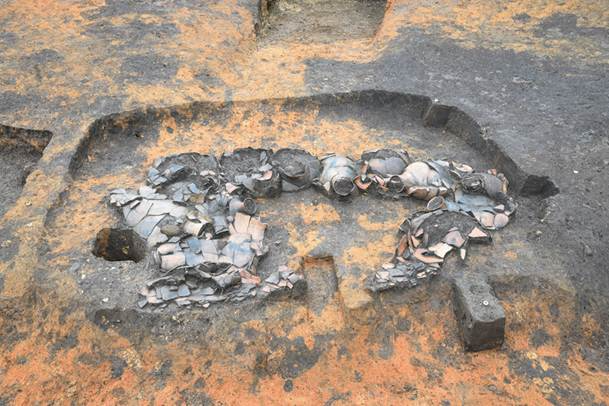
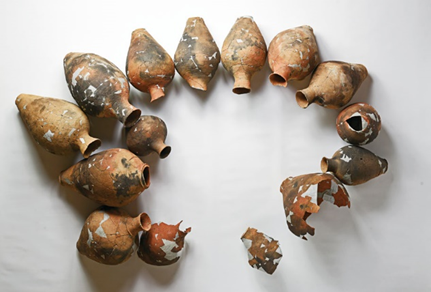 Ring-shaped Arrangement of Jar-shaped Pottery (view from the east)
Ring-shaped Arrangement of Jar-shaped Pottery (view from the east)
Of the 15 vessels, 12 were oriented with their rims facing the center of the pit, two were positioned toward the wall, and one vessel, missing its neck and rim, was buried upside down with its base facing upward.
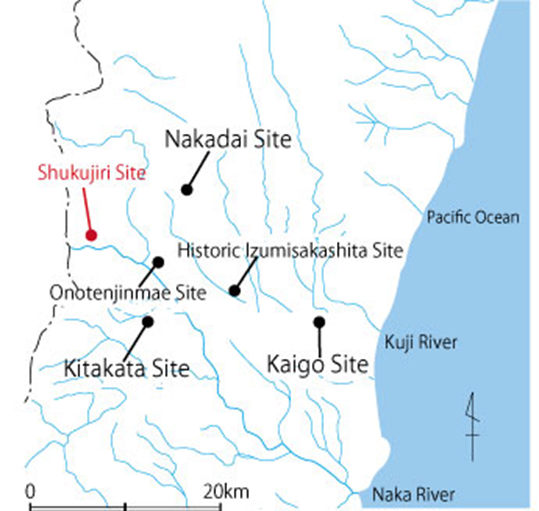
Major Yayoi-period Secondary Burials in Northern Ibaraki Prefecture
These burials are concentrated along the edges of plateaus or on terrace surfaces near the Kuji River, Naka River, and their tributaries. In the Kuji River basin, notable sites include the Kaigo Site, Historic Izumisakashita Site, and Nakadai Site. In the Naka River basin, key sites include the Onotenjinmae Site, Kitakata Site, and Shukujiri Site.
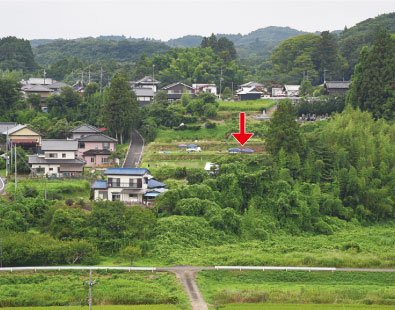
Distant View of the Site (From the East)
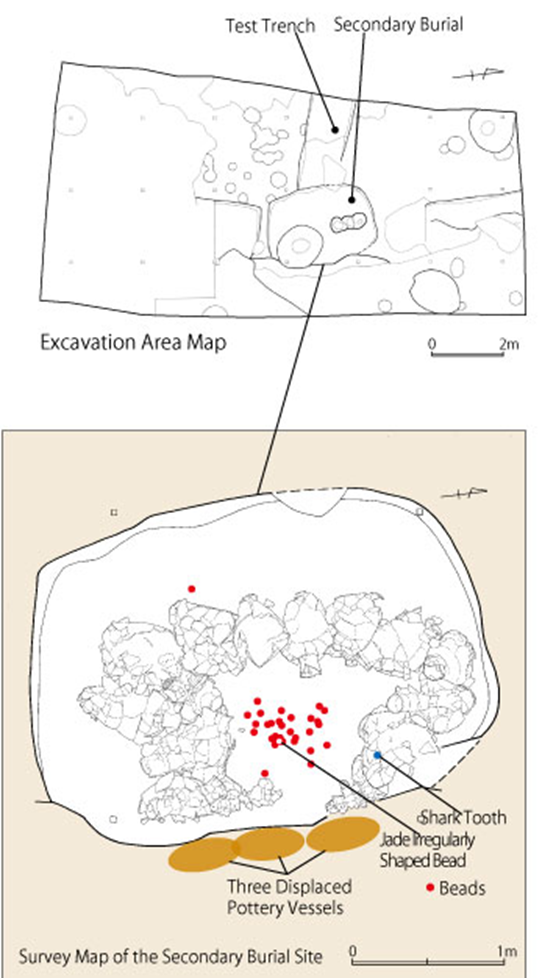
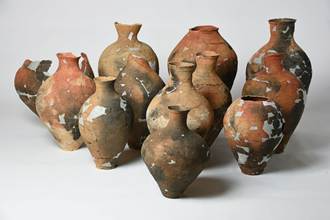
Jar-shaped Pottery Excavated from the Secondary Burial
Some vessels include gourd-shaped forms and rimless-neckless types. The pottery in the center of the front row measures 40 cm in height.
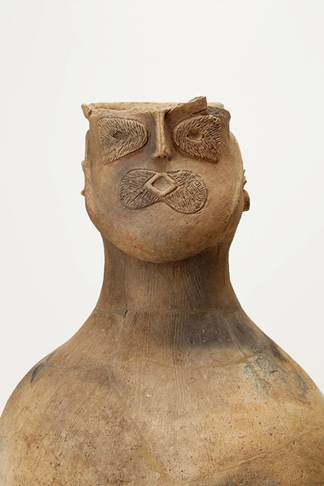
Human-faced Pottery from the Izumisakashita Site
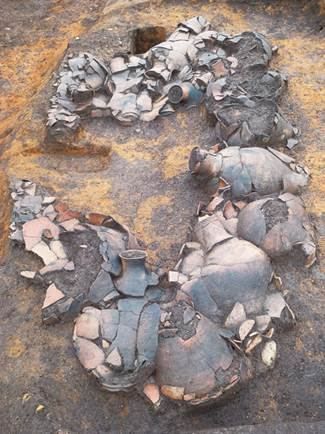
Ring-shaped Arrangement of Jar-shaped Pottery (View from the North)